Home> Company News> Demystifying Needle Roller Bearing Components for Machinery
- AddressToh Guan Centre, 31/F,69 Toh Guan Rd E, Singapore 608609
- Factory AddressToh Guan Centre, 31/F,69 Toh Guan Rd E, Singapore 608609
- Worktime9:00-18:00
- Phone(Working Time)0065-31591578
- Phone(Nonworking Time)0065-31591578
- Fax0065-31591339
Demystifying Needle Roller Bearing Components for Machinery
2024-02-26 17:05:59Needle roller bearing components are an integral part of machinery across various industries. These components play a pivotal role in ensuring the smooth and efficient operation of machinery, contributing significantly to its performance and reliability. In this article, we will demystify needle roller bearing components, shedding light on their functions, types, and applications in machinery. Understanding these components is essential for anyone involved in machinery design, maintenance, or repair, as they can have a profound impact on the overall functionality of the equipment.
The role of needle roller bearing components in machinery cannot be understated. They are responsible for minimizing friction, reducing wear and tear, and maintaining precise alignment within mechanical systems. As we delve deeper into the intricacies of these components, you'll gain insights into their significance and the advantages they offer in enhancing machinery performance.

Types and Varieties
Needle roller bearing components come in a variety of types and configurations, each tailored to suit specific machinery requirements and operating conditions. we will delve into the diverse landscape of needle roller bearing components, shedding light on their types, designs, and the advantages they offer in various applications.
Needle Roller Bearings
Needle roller bearings are one of the most common and widely used types of needle roller bearing components. They consist of cylindrical rollers, much thinner in diameter than their length, resembling needles. These bearings are designed to handle radial loads and provide high radial load-carrying capacity within a compact design. Their small cross-section allows them to fit into tight spaces, making them ideal for applications with limited axial space.
Advantages:
- High radial load-carrying capacity.
- Compact and space-saving design.
- Suitable for applications with limited axial space.
- Excellent performance in high-speed operations.
Applications:
- Automotive transmissions.
- Gearboxes.
- Motorcycle engines.
- Industrial machinery.
Thrust Needle Roller Bearings
Thrust needle roller bearings, as the name suggests, are designed to handle axial (thrust) loads. They consist of small-diameter cylindrical rollers arranged in a cage and are ideal for applications where axial space is limited, and high thrust capacity is required. These bearings are commonly used in conjunction with other types of bearings to support axial loads while radial loads are handled by separate bearings.
Advantages:
- High thrust load-carrying capacity.
- Compact design for limited axial space.
- Suitable for applications with predominantly axial loads.
Applications:
- Automotive clutch assemblies.
- Thrust washers.
- Thrust collars.
- Steering systems.
Drawn Cup Needle Roller Bearings
Drawn cup needle roller bearings are characterized by their closed-end design with a thin-walled outer ring. They are suitable for applications where the housing bore cannot be used as a raceway for needle roller and cage assemblies. These bearings are compact and offer high load-carrying capacity for their size. They are commonly used in automotive and industrial applications.
Advantages:
- Space-saving design.
- High load-carrying capacity.
- Suitable for applications with limited axial space.
Applications:
- Automotive powertrain components.
- Transfer cases.
- Compressors.
- Power tools.
Combined Bearings
Combined needle roller bearings integrate both needle rollers and a ball bearing or thrust bearing component into a single assembly. These bearings are capable of handling both radial and axial loads, making them versatile for applications that require support in multiple directions.
Advantages:
- Radial and axial load-carrying capability.
- Versatile and compact design.
Applications:
- Machine tool spindles.
- Material handling equipment.
- Indexing tables.
- Textile machinery.
Design and Construction
Needle roller bearing components are known for their intricate design and precise construction, which enables them to perform under demanding conditions in various machinery applications. we will delve into the design principles and construction materials that contribute to the durability and exceptional performance of these crucial components.
Design Features of Needle Roller Bearing Components
Needle Rollers: At the heart of every needle roller bearing component are the needle rollers themselves. These rollers are cylindrical in shape, with a significantly larger length-to-diameter ratio than traditional ball bearings. This unique design allows needle rollers to carry higher radial loads while fitting into tight spaces within machinery.
- Advantages:
- High radial load-carrying capacity.
- Reduced friction and wear due to point contact.
- Ideal for applications with limited radial space.
Cage or Retainer: Needle rollers are typically held in place by a cage or retainer made from various materials, including steel, plastic, or brass. The cage prevents the needle rollers from contacting each other, reducing friction and wear.
- Advantages:
- Improved roller alignment and distribution.
- Enhanced durability and performance.
- Noise reduction during operation.
Raceways: The raceways in needle roller bearing components provide a smooth and precise path for the rollers to move along. These raceways can be found on both the inner and outer rings, ensuring proper alignment and load distribution.
- Advantages:
- Even load distribution.
- Minimized stress concentrations.
- Enhanced operational precision.
Construction Materials
|
Steel |
Steel is the most commonly used material for needle roller bearing components due to its excellent strength, durability, and wear resistance. Various steel alloys are employed to meet specific application requirements, with chrome steel (AISI 52100) being a popular choice. |
|
Plastic |
In some applications, plastic cages are used to reduce weight, minimize noise, and resist corrosion. These cages are typically made from high-performance polymers such as nylon or polyamide. |
|
Brass |
Brass cages offer excellent strength, durability, and resistance to corrosion. They are often used in high-speed or high-temperature applications. |
|
Ceramics |
While less common, ceramic rollers or cages can be utilized in specialized applications where extreme temperatures, corrosion resistance, or electrical insulation properties are required.
|
The choice of materials and design features for needle roller bearing components depends on factors such as load capacity, speed, temperature, and environmental conditions. Engineers carefully consider these factors to select the most suitable components for specific machinery applications.
Installation and Maintenance
Proper installation and regular maintenance are vital factors that significantly impact the longevity and performance of needle roller bearing components in machinery. we will provide comprehensive guidelines for both the correct installation of these components and effective maintenance practices to ensure their optimal functionality.
Installation Guidelines
Cleanliness is Key: Before installation, ensure that all components and the surrounding area are thoroughly clean and free from dirt, dust, and contaminants. Any foreign particles can lead to premature wear and reduced performance.
Proper Handling: Handle needle roller bearing components with care to prevent damage or contamination. Avoid dropping, impacting, or applying excessive force to the components.
Precision Fit: Pay meticulous attention to the fit and clearance requirements when installing needle roller bearing components. Follow the manufacturer's recommendations for the appropriate shaft and housing tolerances.
Alignment Matters: Ensure proper alignment of the bearing components to prevent misalignment-induced stress and premature failure. This includes aligning the inner and outer rings and ensuring concentricity.
Lubrication: Apply the recommended lubricant during installation to reduce friction and prevent overheating. Adequate lubrication also helps in maintaining the components' longevity and minimizing wear.
Mounting Methods: Choose the appropriate mounting method, such as press fitting, interference fit, or other suitable techniques, depending on the specific application and bearing type.
Maintenance Practices
Regular Inspection: Implement a routine inspection schedule to check for signs of wear, damage, or abnormal noise during operation. Detecting issues early can prevent catastrophic failures.
Lubrication Maintenance: Monitor the lubrication condition regularly. Ensure that the right type and amount of lubricant are used. Re-grease or re-lubricate at recommended intervals to maintain optimal performance.
Temperature Control: Keep an eye on operating temperatures. Excessive heat can deteriorate lubricants and affect bearing life. Proper cooling mechanisms should be in place if necessary.
Vibration Analysis: Employ vibration analysis tools to detect irregularities in the bearing's operation. Unusual vibrations can be indicative of underlying problems that require attention.
Seal Integrity: Ensure that seals and shields are intact to prevent contamination and maintain lubrication. Damaged or worn seals should be replaced promptly.
Environmental Conditions: Consider the environmental conditions in which the machinery operates. Extreme temperatures, humidity, or corrosive environments may necessitate more frequent maintenance.
Training and Documentation: Train maintenance personnel in proper procedures and keep detailed records of maintenance activities, including dates, lubrication schedules, and inspections.
By adhering to these installation and maintenance guidelines, machinery operators can optimize the performance and extend the lifespan of needle roller bearing components. These practices not only enhance the efficiency of machinery but also contribute to overall cost savings by reducing the need for premature replacements and costly downtime.
In conclusion, understanding the intricacies of needle roller bearing components, from their design and construction to installation and maintenance, is essential for achieving the highest levels of performance and reliability in machinery.
Applications Across Industries
Needle roller bearing components, with their unique design and outstanding capabilities, find application across a wide spectrum of industries. we will explore the diverse range of industries and applications that heavily rely on these components. Through real-world examples, we'll illustrate how needle roller bearing components play a pivotal role in enhancing precision, control, and efficiency in various mechanical systems.
Automotive Industry
The automotive sector is one of the largest consumers of needle roller bearing components. These bearings are used in various automotive applications, such as:
- Transmission Systems: Needle roller bearings are crucial in ensuring the smooth and precise operation of manual and automatic transmissions, contributing to efficient power transfer and gear shifting.
- Suspension Systems: They are employed in suspension systems, reducing friction and allowing for controlled movement, leading to improved ride quality and handling.
- Engine Components: Needle roller bearings support camshafts, crankshafts, and other engine components, promoting efficient power generation and reduced wear.
Aerospace Industry
In the aerospace sector, where precision and reliability are paramount, needle roller bearing components are employed in critical applications, including:
|
Aircraft Landing Gear |
These components support the weight of the aircraft during landing and takeoff, ensuring safe and controlled ground operations. |
|
Flight Control Systems |
Needle roller bearings assist in precise control surface movements, contributing to the aircraft's stability and maneuverability. |
|
Aircraft Engines |
They are utilized in the engine's accessory gearbox, enabling the operation of auxiliary systems.
|
Industrial Machinery
Needle roller bearings are extensively used in various types of industrial machinery, including:
- Machine Tools: Precision machine tools, such as lathes and milling machines, rely on these components for accurate positioning and movement.
- Printing Machinery: In printing presses, needle roller bearings aid in maintaining precise alignment and reducing friction during the printing process.
- Conveyors and Material Handling Equipment: They support the movement of heavy loads in conveyor systems, ensuring smooth and efficient material handling.
Construction and Heavy Equipment
The construction and heavy equipment industry benefits from needle roller bearings in equipment like:
- Excavators and Loaders: These components withstand heavy loads, shocks, and vibrations in construction machinery, contributing to their durability and performance.
- Cranes: Needle roller bearings play a crucial role in crane components, facilitating smooth and controlled lifting and lowering operations.
- Agricultural Machinery: Tractors and agricultural equipment rely on these bearings to operate under challenging conditions while maintaining precision.
Medical Devices
In the medical field, where precision and reliability are essential, needle roller bearing components are used in various medical devices, including:
|
MRI Machines |
These components contribute to the precise movement of sensitive imaging equipment, ensuring accurate diagnostics. |
|
Surgical Robots |
Needle roller bearings enable the precise and controlled movement of robotic arms in minimally invasive surgeries. |
|
Laboratory Equipment |
Precision instruments and laboratory devices often incorporate these bearings for accurate sample handling and analysis. |
These are just a few examples of the industries and applications where needle roller bearing components are indispensable. Their versatility and reliability make them a cornerstone of modern machinery, driving advancements in technology and engineering across various sectors. As we conclude this exploration, we will delve into the critical aspects of selecting and installing needle roller bearing components for specific machinery, ensuring optimal performance and longevity.
Future Trends and Innovations
Material Advancements
One of the foremost trends in needle roller bearing components is the continuous evolution of materials. Manufacturers are investing in research and development to create advanced materials that offer enhanced strength, durability, and resistance to wear and tear. This evolution is driven by the need for bearings that can withstand higher loads, operate in extreme conditions, and have an extended service life. Expect to see materials like ceramic, advanced polymers, and specialized coatings gaining prominence, contributing to improved machinery performance.
Lubrication and Maintenance Innovations
Efficient lubrication is crucial for the smooth operation of needle roller bearing components. The future will witness innovative solutions for lubrication and maintenance, with a focus on reducing friction, heat generation, and overall wear. Self-lubricating bearings and automated lubrication systems will become more prevalent, reducing the need for frequent manual maintenance and extending component life. These innovations will significantly impact machinery reliability and reduce downtime.
Internet of Things (IoT) Integration
The integration of needle roller bearing components with IoT technology is poised to revolutionize machinery monitoring and maintenance. Bearings equipped with sensors will provide real-time data on temperature, vibration, load, and other critical parameters. This data can be analyzed to detect anomalies, predict potential failures, and schedule maintenance proactively. IoT integration will usher in an era of predictive maintenance, minimizing unexpected breakdowns and optimizing machinery uptime.
3D Printing and Customization
Advancements in 3D printing technology are opening new possibilities for customizing needle roller bearing components. Manufacturers can create bearings with intricate designs tailored to specific machinery requirements. This level of customization enables engineers to optimize bearing performance for their applications, leading to improved efficiency and precision in machinery.
Sustainable Bearings
Environmental sustainability is a growing concern in all industries. Bearing manufacturers are responding by developing eco-friendly materials and manufacturing processes. Sustainable needle roller bearing components not only reduce the carbon footprint but also align with global efforts towards green and clean technologies. These sustainable bearings are expected to become more prevalent as environmental regulations and consciousness continue to rise.
Nanotechnology Applications
Nanotechnology offers precision at the nanoscale, and its applications in bearing technology are on the horizon. Bearings with nanoscale coatings and structures will provide exceptional performance in terms of reduced friction, increased load-bearing capacity, and extended lifespan. Nanotechnology-enabled needle roller bearing components will find applications in cutting-edge machinery requiring unparalleled precision.
In conclusion, the future of needle roller bearing components is marked by continuous innovation, driven by the need for enhanced performance, reliability, and sustainability in machinery. These emerging trends and technologies will have a profound impact on various industries, making machinery more efficient, durable, and environmentally friendly.

FAQs: Common Questions About Needle Roller Bearing Components
we will address some of the frequently asked questions (FAQs) about needle roller bearing components. These questions often arise when considering the selection, installation, and maintenance of these critical components in machinery. Let's dive into the answers to these common queries.
What Are Needle Roller Bearing Components?
Needle roller bearing components refer to the essential elements that make up needle roller bearings. These components include the outer and inner rings, needle rollers, cages, and seals (if applicable). Together, they form a precision-engineered assembly that facilitates rotational motion with minimal friction.
What Makes Needle Roller Bearings Different from Other Bearings?
Needle roller bearings are distinct from other types of bearings, such as ball bearings or roller bearings, due to their unique design. They use long, thin, and cylindrical rollers (needle rollers) to support heavy radial loads while maintaining a small cross-sectional profile. This design allows for high load-carrying capacity in limited space.
What Applications Are Suitable for Needle Roller Bearings?
Needle roller bearings are versatile and find applications in various industries, including automotive, aerospace, industrial machinery, and more. They are commonly used in components like camshaft followers, crankshafts, and transmission systems due to their ability to handle high radial loads.
How Do I Select the Right Needle Roller Bearing Components?
Selecting the appropriate needle roller bearing components involves considering factors such as load capacity, operating conditions, and space constraints. Engineers must calculate the required load capacity, taking into account both radial and axial loads, to choose the right bearing components. Additionally, factors like speed, temperature, and lubrication play a crucial role in the selection process.
What Lubrication Method Is Best for Needle Roller Bearings?
Proper lubrication is vital for the performance and longevity of needle roller bearing components. The choice of lubrication method depends on the application and operating conditions. Common methods include oil bath lubrication, grease lubrication, and oil-air lubrication systems. The selection should ensure adequate lubrication and minimize friction.
How Can I Extend the Lifespan of Needle Roller Bearing Components?
Maintaining and extending the lifespan of needle roller bearing components involves proper installation and regular maintenance. Ensure that the components are correctly aligned during installation to prevent misalignment-induced wear. Regularly inspect for signs of wear, contamination, or damage and replace any worn-out components promptly.
What Are the Common Issues Faced with Needle Roller Bearings?
Common issues with needle roller bearing components include premature wear, overheating, and noise generation. These problems can often be attributed to factors like inadequate lubrication, misalignment, excessive loads, or contamination. Proper installation, lubrication, and maintenance can mitigate these issues.
Can Needle Roller Bearings Handle High-Speed Applications?
Yes, needle roller bearings can be suitable for high-speed applications when the correct design, lubrication, and materials are chosen. High-quality needle roller bearing components with optimized cage designs and lubrication methods can effectively handle high rotational speeds while maintaining performance and reliability.
In conclusion, understanding needle roller bearing components is essential for machinery professionals and engineers seeking to optimize the performance of their systems. By selecting, installing, and maintaining these components correctly, you can ensure the efficiency, reliability, and longevity of your machinery.
Mud pump bearings Turntable bearings Agricultural bearings Angular Contact Bearings Duplex Angular Contact Bearings Industrial bearings Iron and steel industry bearings Power transmission bearing Hydrostatic centripetal bearing Ball Thrust Bearings Papermaking Machinery bearings Agricultural machinery bearing McGILL bearing Rexroth pump assay Komatsu motor parts BOSCH Fuel injector Hitachi excavator parts Axial Piston Pumps Sauer Danfoss pump Eaton pump parts Nachi pump assay Linde pump Mining Construction Ball Bearings Linear Bearings vane pumps gear pumps inc piston pumps Thin-Section Ball Bearings Adapter Sleeves pressure valves gear reducer relief valves Mcgill Bearing Die & Mold Plain-Bearing Bushings FAG Bearing Singapore SKF bearing Accessories SKF bearing Housing SKF bearing shaft seals SKF Bearing units Bearing Distributors Inventory Oilfield mud pump bearings Heavy-Duty Shaker Screen Spherical Double row double row tapered roller bearings (inch series) Multi-Row Roller Bearings NTN Four Row Cylindrical Roller Bearings NTN SL Type Cylindrical Roller Bearings NTN SL Type Cylindrical Roller Bearings for Sheaves NTN Single Row Tapered Roller Bearings NTN Double Row Tapered Roller Bearings NTN Four Row Tapered Roller Bearings NTN Spherical Roller Bearings NTN Thrust Bearings NTN Bearings for special applications NTN DOUBLE-ROW CYLINDRICAL ROLLER BEARINGS NSK FULL-COMPLEMENT CYLINDRICAL ROLLER BEARINGS NSK SINGLE-ROW TAPERED ROLLER BEARINGS NSK YUKEN Piston pump DOUBLE-ROW TAPERED ROLLER BEARINGS NSK SPHERICAL ROLLER BEARINGS NSK SINGLE-DIRECTION THRUST BALL BEARINGS NSK CYLINDRICAL ROLLER THRUST BEARINGS NSK TAPERED ROLLER THRUST BEARINGS NSK SPHERICAL THRUST ROLLER BEARINGS NSK ROLLING BEARINGS FOR STEEL MILLS NSK SEALED-CLEAN FOUR-ROW TAPERED ROLLER BEARINGS NSK FOUR-ROW CYLINDRICAL ROLLER BEARINGS NSK DOUBLE-ROW TAPERED ROLLER BEARINGS NSK Roll Bearings for Mills NSK Ball Bearings NSK TAPERED ROLLER THRUST BEARINGS For Adjusting Screws NSK Thin Section Bearings Kaydon Double row double row tapered roller bearings (inch series) Double direction thrust tapered roller bearings Full complement Tapered roller Thrust bearing Thrust cylindrical roller bearings Thrust spherical roller bearings Sealed Four Row Tapered Roller Bearings Four row tapered roller bearings Double outer double row tapered roller bearings TDO double-row tapered roller bearings Single row tapered roller bearings inch Double inner double row tapered roller bearings TDI Double inner double row tapered roller bearings inch Spherical roller bearing Four row cylindrical roller bearings Single row cylindrical roller bearings Full row of cylindrical roller bearings Double row cylindrical roller bearings Double row full complement cylindrical roller bearings Four point contact ball bearings Double row angular contact ball bearings Deep groove ball bearings ANGULAR CONTACT THRUST BALL BEARINGS TYPE TVL DTVL angular contact thrust ball bearing. TP thrust cylindrical roller bearing TPS thrust cylindrical roller bearing THRUST SPHERICAL ROLLER BEARINGS TYPES TSR-EJ AND TSR-EM TTHD THRUST TAPERED ROLLER BEARINGS TTHDFL thrust tapered roller bearing TTHDFLSA THRUST TAPERED ROLLER BEARINGS THRUST TAPERED ROLLER BEARINGS TYPES TTSP, TTSPS AND TTSPL THRUST TAPERED ROLLER BEARINGS – TYPES TTC, TTCS AND TTCL SCREWDOWN BEARINGS – TYPES TTHDSX/SV AND TTHDFLSX/SV THRUST TAPERED ROLLER BEARING TYPES TTDWK AND TTDFLK CROSSED ROLLER BEARINGS TXR Tapered Roller bearings double-row • Type TDO Tapered Roller bearings double-row TDI TDIT Tapered Roller Bearings double-row TNA Tapered Roller Bearings double-row TNASWE Tapered Roller Bearings double-row Spacer assemblies TTVS TTSP TTC TTCS TTCL tapered roller thrust BEARINGS Heavy-Duty Shaker Screen Spherical Roller Bearings Timken SPHERICAL ROLLER BEARINGS CYLINDRICAL ROLLER BEARINGS ONE-ROW METRIC ISO SERIES CYLINDRICAL ROLLER BEARINGS one-row STANDARD SERIES CYLINDRICAL ROLLER BEARINGS FULL-COMPLEMENT NCF CYLINDRICAL ROLLER BEARINGS TWO-Row Four-Row Cylindrical Roller Bearings CYLINDRICAL ROLLER BEARINGS HJ SERIES CYLINDRICAL ROLLER BEARINGS 5200 A5200 metric series HeavY-duty needle roller bearings four-row cylindrical roller Bearing assembly four-row cylindrical roller Bearing inner ring Outer assembly four-row tapered roller Bearings • tQow – 2tdiw Timken Sealed roll neck Bearings four-row tapErEd rollEr BEaringS tQitS TnasWH TWo-roW TaPered roller bearings TdiT TnaT two-row tapErEd rollEr BEaringS tdik THrusT TaPered roller bearings TTdFlk, TTdW and TTdk bearings screwdown systems thrust tapered rollEr Bearings Thrust spherical roller bearing Mud pump bearings TOKYO-KEIKI piston pump TOKYO-KEIKI vane pump DAIKIN piston pump DAIKIN vane pump DAIKIN Rotor pump VICKERS Piston pump Vickers vane pump VICKERS gear pump NACHI gear pump NACHI piston pump Rexroth A1VO Rexroth A10VSO Rexroth AA4VSO Rexroth A15VSO Rexroth AZPF parker PV piston pump parker PVP piston pump parker PAVC piston pump parker vane pump Multi-Row Roller Bearings NTN Four Row Cylindrical Roller Bearings NTN SL Type Cylindrical Roller Bearings NTN SL Type Cylindrical Roller Bearings for Sheaves NTN Single Row Tapered Roller Bearings NTN Double Row Tapered Roller Bearings NTN Four Row Tapered Roller Bearings NTN Spherical Roller Bearings NTN Thrust Bearings NTN Bearings for special applications NTN DOUBLE-ROW CYLINDRICAL ROLLER BEARINGS NSK FULL-COMPLEMENT CYLINDRICAL ROLLER BEARINGS NSK SINGLE-ROW TAPERED ROLLER BEARINGS NSK YUKEN Piston pump DOUBLE-ROW TAPERED ROLLER BEARINGS NSK SPHERICAL ROLLER BEARINGS NSK SINGLE-DIRECTION THRUST BALL BEARINGS NSK CYLINDRICAL ROLLER THRUST BEARINGS NSK TAPERED ROLLER THRUST BEARINGS NSK SPHERICAL THRUST ROLLER BEARINGS NSK ROLLING BEARINGS FOR STEEL MILLS NSK SEALED-CLEAN FOUR-ROW TAPERED ROLLER BEARINGS NSK FOUR-ROW CYLINDRICAL ROLLER BEARINGS NSK DOUBLE-ROW TAPERED ROLLER BEARINGS NSK Roll Bearings for Mills NSK CROSSED-ROLLER BEARINGS NSK Ball Bearings NSK TAPERED ROLLER THRUST BEARINGS For Adjusting Screws NSK Roller Bearings NSK Thin Section Bearings Kaydon Double row double row tapered roller bearings (inch series) Double direction thrust tapered roller bearings Full complement Tapered roller Thrust bearing Thrust cylindrical roller bearings Thrust spherical roller bearings Sealed Four Row Tapered Roller Bearings Four row tapered roller bearings Double outer double row tapered roller bearings TDO double-row tapered roller bearings Single row tapered roller bearings inch Double inner double row tapered roller bearings TDI Single row tapered roller bearings Double inner double row tapered roller bearings inch Split spherical roller bearings Spherical roller bearing Four row cylindrical roller bearings Single row cylindrical roller bearings Full row of cylindrical roller bearings Double row cylindrical roller bearings Double row full complement cylindrical roller bearings Four point contact ball bearings Double row angular contact ball bearings Deep groove ball bearings ANGULAR CONTACT THRUST BALL BEARINGS TYPE TVL DTVL angular contact thrust ball bearing. TP thrust cylindrical roller bearing TPS thrust cylindrical roller bearing THRUST SPHERICAL ROLLER BEARINGS TYPES TSR-EJ AND TSR-EM TTHD THRUST TAPERED ROLLER BEARINGS TTHDFL thrust tapered roller bearing TTHDFLSA THRUST TAPERED ROLLER BEARINGS THRUST TAPERED ROLLER BEARINGS TYPES TTSP, TTSPS AND TTSPL THRUST TAPERED ROLLER BEARINGS – TYPES TTC, TTCS AND TTCL SCREWDOWN BEARINGS – TYPES TTHDSX/SV AND TTHDFLSX/SV THRUST TAPERED ROLLER BEARING TYPES TTDWK AND TTDFLK CROSSED ROLLER BEARINGS TXR Tapered Roller bearings double-row • Type TDO Tapered Roller bearings double-row TDI TDIT Tapered Roller Bearings double-row Spacer assemblies TTVS TTSP TTC TTCS TTCL tapered roller thrust BEARINGS Heavy-Duty Shaker Screen Spherical Roller Bearings Timken SPHERICAL ROLLER BEARINGS CYLINDRICAL ROLLER BEARINGS ONE-ROW METRIC ISO SERIES CYLINDRICAL ROLLER BEARINGS one-row STANDARD SERIES CYLINDRICAL ROLLER BEARINGS FULL-COMPLEMENT NCF CYLINDRICAL ROLLER BEARINGS TWO-Row Four-Row Cylindrical Roller Bearings CYLINDRICAL ROLLER BEARINGS HJ SERIES CYLINDRICAL ROLLER BEARINGS 5200 A5200 metric series HeavY-duty needle roller bearings four-row cylindrical roller Bearing assembly four-row cylindrical roller Bearing inner ring Outer assembly Timken Sealed roll neck Bearings four-row tapErEd rollEr BEaringS tQitS TnasWH TWo-roW TaPered roller bearings TdiT TnaT two-row tapErEd rollEr BEaringS tdik THrusT TaPered roller bearings TTdFlk, TTdW and TTdk bearings screwdown systems thrust tapered rollEr Bearings Thrust spherical roller bearing Mud pump bearings TOKYO-KEIKI piston pump TOKYO-KEIKI vane pump YUKEN vane pump DAIKIN piston pump DAIKIN vane pump DAIKIN Rotor pump VICKERS Piston pump Vickers vane pump VICKERS gear pump NACHI gear pump NACHI piston pump Rexroth A1VO Rexroth A10VSO Rexroth AA4VSO Rexroth A15VSO Rexroth AZPF parker PV piston pump parker PVP piston pump parker PAVC piston pump Main pump

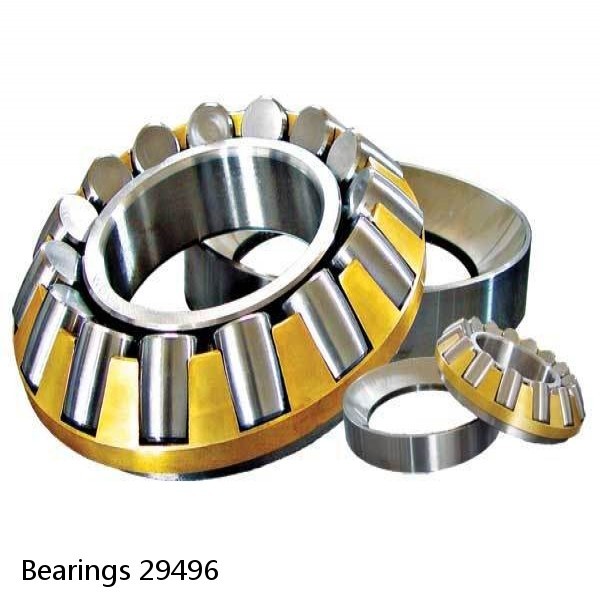 Bearings 29496
Bearings 29496 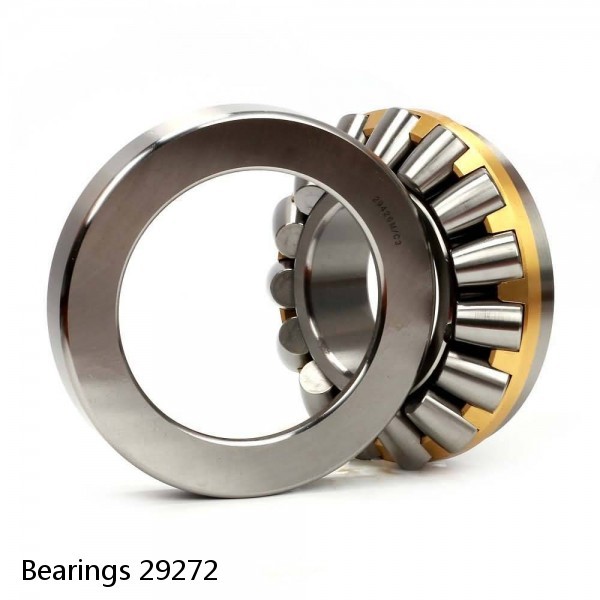 Bearings 29272
Bearings 29272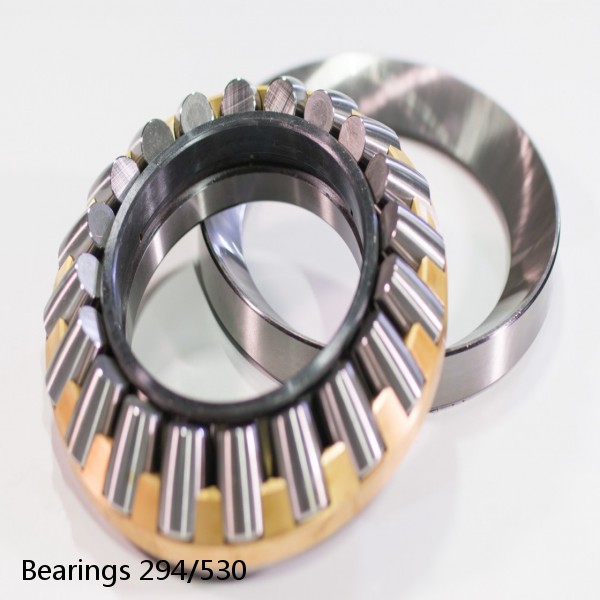 Bearings 294/530
Bearings 294/530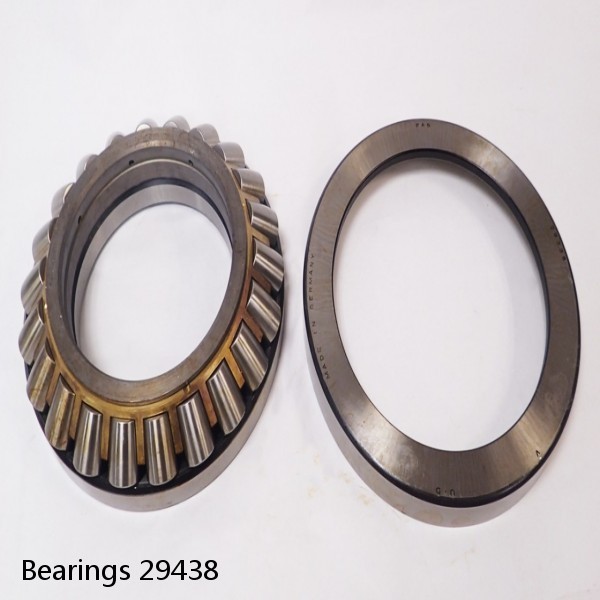 Bearings 29438
Bearings 29438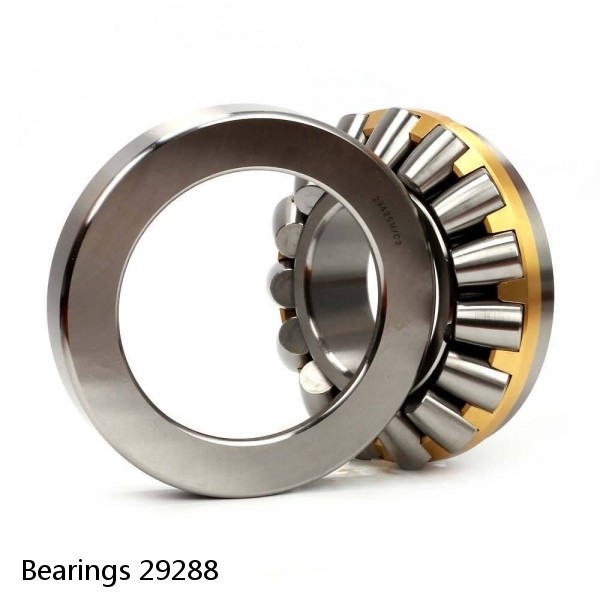 Bearings 29288
Bearings 29288